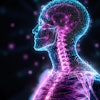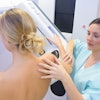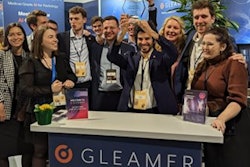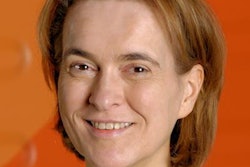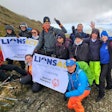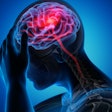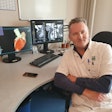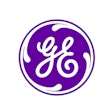Today we can reveal the list of award winners for the 2023 EuroMinnies, following a rigorous process spanning more than three months and two rounds of voting. The eight recipients of the individual and industry awards come from a wide range of European nations.
For the third consecutive year, the winner of the Most Influential Radiology Researcher award comes from the Erasmus MC in Rotterdam, the Netherlands. Artificial intelligence (AI) and MRI safety feature prominently among the winners, and there's an award for a podcast with the ECR 2023 President. The Best New Radiology Device award goes to a PET/CT scanner, underlining the growing importance of hybrid imaging systems.
In the EuroMinnies awards scheme, the full list of semifinalists was based on nominations submitted in November 2022 by members of AuntMinnieEurope.com. An expert panel comprising members of the editorial advisory board, past winners and runners-up, and regular columnists selected two finalists in each category to go forward to the finals of the EuroMinnies. The judges then chose the winners in a second ballot.
During March, the winners will receive their trophies, and we will publish commemorative photos and videos.
Most Influential Radiology Researcher
EuroMinnies 2023 winner: Prof. Wiro Niessen, principal investigator, Biomedical Imaging Group, Erasmus MC, Rotterdam, the Netherlands
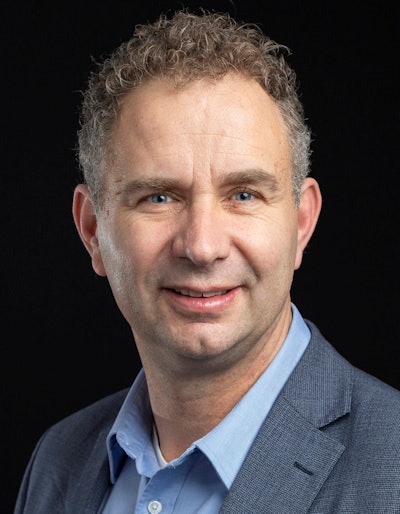 Prof. Wiro Niessen.
Prof. Wiro Niessen.Prof. Wiro Niessen is well known for his research in medical informatics and AI. His first major project was a physics Master of Science thesis in 1993, using concepts of the human visual system -- "most notably that we as humans observe visual information at multiple spatial scales to build computer vision tools to analyze image data. Applying these tools to MRI data is how I entered the wonderful world of medical imaging!" he recalled.
Niessen's doctoral supervisors at University Medical Center Utrecht, Prof. Bart ter Haar Romeny and Prof. Max Viergever, were both very influential. "They gave me the opportunity to experience the joy of being part of a research team and an international research community."
Among his own peers, he admires people who bring the field of radiology forward as a whole, alongside their role within their own organizations.
"Examples that come to my mind are Geraldine McGinty, who is active on the topic of women in radiology leadership; Luis Martí-Bonmatí, who is leading a multicenter consortium to make cancer images available for AI development and validation (EUCAIM); and Gabriel Krestin, who is retired from Erasmus MC but is still very active, and who had an enormous impact on the radiology research ecosystem in Europe, e.g. through initiating the European Institute for Biomedical Imaging Research (EIBIR)," Niessen commented.
He is most impressed with AI research that crosses borders, e.g. combining medical imaging information with other data sources, including genetic data and sensor data, leading to novel possibilities, such as for personalized medicine. He thinks the September 2022 Nature paper by Julián N. Acosta et al, Multimodal biomedical AI, "provides a great overview of the state of the art and the opportunities."
Also, he has a strong interest in bringing AI to the clinic, which requires "real co-creation," Niessen noted.
"Data is crucial here, but it is also about the quality of the data in the context of the clinical task," he explained. "Are the data that are accessible representative for daily clinical practice? Are the relevant metadata (why was the image being taken in the first place, what was the clinical context, etc.) available? To address these questions, co-creation with end users is needed, and it is our joint challenge to facilitate this co-creation on a large scale."
Since 1 February 2023, Niessen has worked as Dean of Medical Sciences at University Medical Center Groningen. "Rather than being actively involved in the actual research itself, I will be more active to facilitate this co-creation at large scale in my new institute and in collaboration with others."
Runner-up: Prof. Karen Rosendahl, professor and consultant pediatric radiologist, UiT The Arctic University, Tromsø, Norway
Most Effective Radiology Educator
EuroMinnies 2023 winner: Prof. Marie-Pierre Revel, head of radiology, Hôpital Cochin, Paris
 Prof. Marie-Pierre Revel.
Prof. Marie-Pierre Revel.Prof. Marie-Pierre Revel is deeply involved in training and education in thoracic imaging.
She became a thoracic radiologist "because she had the chance to collaborate with a wonderful clinician, Prof. Guy Meyer, a specialist in pulmonary embolism. Together we did exciting clinical research." She said her mentor in radiology, Prof. Guy Frija, gave her two pieces of valuable advice: Avoid specialist speeches and invest in the European Society of Radiology.
In radiology education today, she has great admiration for Prof. Valérie Vilgrain -- "for her didactic qualities, and the very clinical approach of her analysis. She set up a joint consultation with a surgeon colleague. An anecdote: While she was a young fellow, a foreign surgeon in training asked his very famous colleague if a case was operable. The surgeon turned to Valérie to ask her. The surgeon-in-training could not believe it!"
During the COVID-19 pandemic, Revel has had to learn new skills and adapt her own teaching style. "Like many colleagues, I became familiar with remote tools, allowing me to produce presentations and then exchange them secondarily with learners. This is the concept of reverse pedagogy, where you come to a session after having already worked on the subject, to ask questions."
She is convinced that in another five years, even more radiology education will be conducted online. "I think this proportion will increase significantly. It already allows the course coverage to be much wider than what is possible with only face-to-face training; it is the choice of the European School of Radiology, which allows no one to be excluded."
However, in-person congresses will continue to play a role. "They allow us to be 100% available and not taken up by hospital tasks. It's important to get together with colleagues to discuss things directly -- and also such a nice experience!"
Among the free educational resources, Revel has two main recommendations for radiology trainees: "AuntMinnie, of course! And also for chest imaging, I recommend connecting with the European Society of Thoracic Imaging (ESTI) website. The subscription is very inexpensive when you are already a member of a national society or of the ESR, and you have access to all the webinars."
Runner-up: Prof. Christian Loewe, head, Division of Cardiovascular and Interventional Radiology, Medical University of Vienna
Radiology Rising Star
EuroMinnies 2023 winner: Dr. Martina Pecoraro, Sapienza University of Rome, Italy
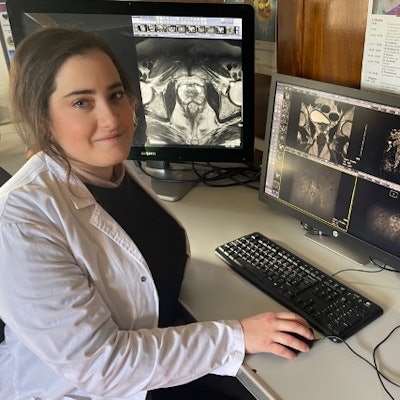 Dr. Martina Pecoraro.
Dr. Martina Pecoraro.As a PhD student, Dr. Martina Pecoraro is involved in several genitourinary (GU) research studies, such as testing different prediction models for the early detection of prostate cancer, using MRI and circulating microRNAs and comparing a range of pathways in terms of clinical "net benefit." She is due to finish her studies in another three years.
"To join the program at Sapienza University, one must complete a two-part admission process, which includes presenting a research project and participating in an oral interview," she told AuntMinnieEurope.com. "Every year, a report on the progress made must be submitted to the Academic Board. At the end of the program, the candidate must defend their thesis based on the research project presented."
She's been a board member of the ESR's Radiology Trainees' Forum (RTF) since 2020. "I play an active role in discussions and initiatives related to education and training. This includes contributing to events, proposing educational content, and serving as a voice for radiology trainees, gaining an understanding of the needs of young radiologists."
Pecoraro was thrilled to participate in a study that evaluated the effects of the COVID-19 pandemic on the education of European radiology trainees. She likes to facilitate connections among the "young groups" of the radiological associations, such as the European Society of Urogenital Radiology's Junior Network, of which she is a member. Since 2022, she has served as an RTF representative on the ESR research committee.
At ECR 2023, she will give an oral presentation on a prostate MRI project led by her mentor Prof. Valeria Panebianco. "ECR provides an exceptional platform for researchers to present their findings, learn about new research initiatives, and collaborate with other experts in the field," she said.
Pecoraro grew up in Salerno, on the Amalfi Coast, but has "a fondness for Rome and the fact that it is essentially a museum that has come to life. Although it can be challenging to live there, it's definitely worth it." In her spare time, she loves taking strolls on sunny Sunday mornings while listening to music, reading novels by Japanese and Chilean authors, and enjoying a fine glass of red wine with friends in the city center.
Runner-up: Dr. Saif Afat, University Hospital of Tuebingen, Germany
Most Influential Radiographer
EuroMinnies 2023 winner: Titti Owman, medical research assistant, Lund University, Sweden
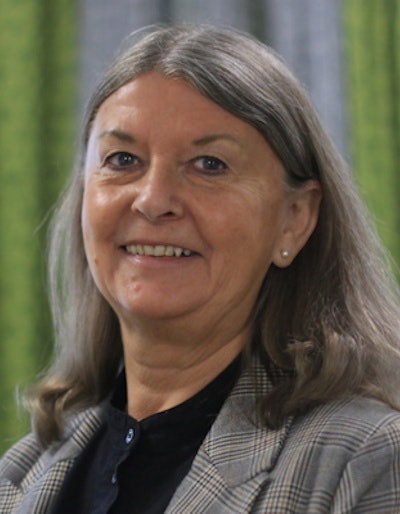 Titti Owman.
Titti Owman.Titti Owman has dedicated most of her career to MRI safety, particularly education and training. "MR safety standards have improved a lot," she said. "I started to work with MR in 1983 and MR safety wasn't even 'invented.' The first lethal accident (that we know of) happened in 2001 and that was a severe wake-up call. Since then, safety thinking has become a critical part of working with MR."
Awareness of different risks and how to avoid them has grown. "Another essential issue is having proper documentation on responsibilities and routines. In Europe, it is mandatory that all personnel working with or near an MR scanner must have the appropriate level of MR safety training. This training must be repeated periodically."
The MRI suite is a safer place for patients and staff, but there is still work to be done. "We can only guess how many hidden incidents and accidents there really are, and we only see the tip of the iceberg," Owman said. "Many incidents are hidden due to shame or to protect the clinic/institution from a bad reputation. Some of them are never recorded due to a stressful work situation, etc."
It's vital to identify the cause of these incidents. "It is not only accidents that should be reported but also close calls that might have caused an accident." And there needs to be an accessible, updated, and efficient database for these reports to be shared anonymously. "We should also be able to share what action was taken in each case. This kind of improvement may save lives."
It is too early to predict what type of incidents or accidents might occur with low-field mobile systems, she continued. "Clinical experiences are still very limited and safety recommendations are not yet conclusive."
Bringing low-field systems to the intensive care unit might cause staff to have less respect for strong clinical magnets. "But since the two types of MR scanners look very different ... I do not believe this will be a severe problem," she added. "Since the tendency now is to use AI to increase picture quality, low-field scanners might contribute to less incidents."
In medical imaging as a whole, "the previously very sharp lines between the different radiological professions have decreased -- not only between radiologists and radiographers, but also between radiographers, nurses, and other radiology staff. It's probably inevitable as we move more and more into super high tech and AI," Owman said.
Superspecialized task assignments in radiography are becoming more frequent outside university hospitals. "As long as staff have proper education and MR recommendations and legal issues like radiation protection are followed, working across professional boundaries is a great opportunity," she noted.
Runner-up: Luis Lança, associate professor, Lisbon School of Health Technology (ESTeSL), Portugal
Most Significant News Event in European Radiology
EuroMinnies 2023 winner: European Society of Breast Imaging (EUSOBI) recommends MRI for extremely dense breasts
Breast radiologists knew it was a highly significant moment when EUSOBI recommended on 8 March 2022 that MRI be used for breast cancer screening in women with extremely dense breasts. The statement indicated personalized screening programs would now be the way forward.
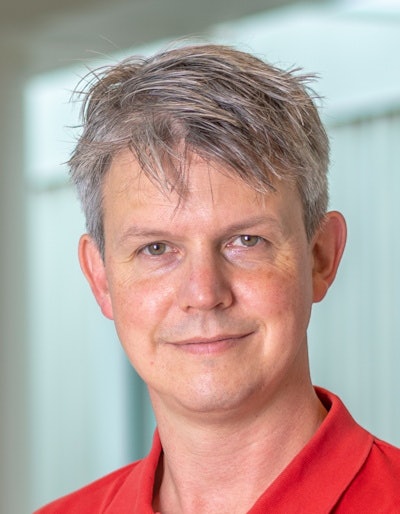 Dr. Ritse Mann, chair of the EUSOBI scientific committee.
Dr. Ritse Mann, chair of the EUSOBI scientific committee."We have certainly had a lot of interest. Overall, the feedback is highly positive, both from women and from radiologists," lead author Dr. Ritse Mann told AuntMinnieEurope.com. "People agree we should inform women of breast density and offer better screening technology to women with extremely dense breasts."
Mann admits EUSOBI has encountered scepticism caused by perceived practical inability to offer MRI screening to large populations due to a shortage of machines, imaging slots, and experienced readers. He said the authors acknowledged by saying implementation would take time and effort.
"We have created a strong radiologic voice that is well respected, but this has obviously not ended the discussion," he noted. "As screening programs are usually very large, it appears very difficult to introduce changes. Persistence and a clear message are therefore important."
The authors don't have any immediate plans to revise the document. "Evidence on better risk stratification and other screening tools has not matured enough in the past year to warrant a change. It is likely that in the not-too-distant future, the data on contrast-enhanced mammography will become good enough to make this an alternative, but more extensive comparative studies are required," said Mann, a breast and interventional radiologist at the Radboud University Medical Center in Nijmegen and the Netherlands Cancer Institute in Amsterdam.
In a European Radiology editorial on 14 April 2022 ("Breast MRI for 'the Masses' "), Dr. Wendie Berg wrote: "The EUSOBI guideline emphasizes the need for shared decision-making of patients and their healthcare providers. This requires both women and providers to be informed and for pertinent options to be available. While processes are still evolving, this major first step is to be applauded."
Mann thinks more women and healthcare providers are gradually becoming better informed and more options are becoming available. "Within the patient associations now, knowledge on breast density and the potential implications is increasing. I now experience more self-referred women in my practice who request their own MRI scan."
Several sessions on screening will take place at ECR 2023, and Mann recommends "E³ 25C - Breast cancer screening" on Friday 3 March at 12.30-1.30 pm in Room A, where he'll talk on breast screening using MRI. Also, the 2022 statement will be discussed at the EUSOBI annual congress in Valencia, Spain, in September, but only in relation to other guidelines and recommendations, he said.
Runner-up: Opposition to Ukraine war grows among Russian radiologists
Scientific Paper or Podcast of the Year
EuroMinnies 2023 winner: The vanishing radiologist with Dr. Adrian Brady. RadCast episode by Drs. Uzoma Nnajiuba and Jamie Howie, 6 May 2022
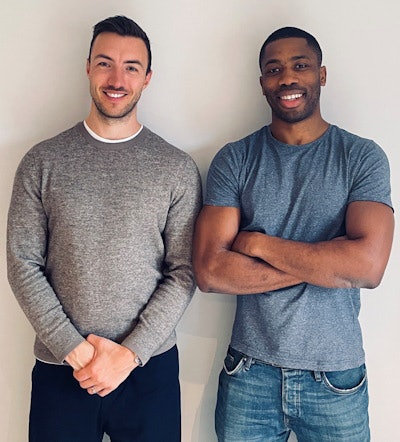 RadCast co-founders Dr. Jamie Howie (left) and Dr. Uzoma Nnajiuba.
RadCast co-founders Dr. Jamie Howie (left) and Dr. Uzoma Nnajiuba.The winning podcast was recorded just before Brady became president of the European Society of Radiology.
"We can certainly relate to the concept of the vanishing radiologist," Dr. Uzoma Nnajiuba said. "We're constantly under pressure to increase our output, and it can be very tempting to just squirrel yourself away in your office with your headphones on or at home producing reports."
To show radiologists are valuable team members, it's vital to be available for clinical colleagues. "Commoditization is a threat, and we don't want to end up being judged solely on our reporting volume. We need to reinforce how we add value," Dr. Jamie Howie noted.
Since RadCast posted its first podcast in July 2018, they have produced 53 episodes. "Finding the time can be tricky. We've streamlined the process, but Uzoma still clocks up a few late nights prior to release, tweaking the audio!" Howie said.
To come up with topics, they have a few brainstorming sessions a year. Dr. Muhammad Khan, the third co-founder, helps to generate ideas and questions. "There is always a lot of exciting stuff going on in radiology, so it is fertile territory for material. We occasionally get potential guests approaching us, which is flattering," Howie noted.
Other than the Brady episode, these podcasts stand out most for the team:
- Episode 17: Uncovering the value of data with Dr. Martin Willemink. "Our first transatlantic interview. We were quite nervous."
- Episode 27: The rules of radiology with Dr. Paul McCoubrie. "He is a great role model, and this was a really fun podcast to record!"
- Episode 52: From the West Midlands to Dubai with Dr. Umair Janjua. "Umair did a brilliant job painting a picture of what it's like to work in Dubai."
The 53 podcasts have had over 55,000 total plays. About 60% of listeners are in the U.K., followed by 10% in the U.S. and 5% in Australia. RadCast has about 1,500 followers on Instagram, 1,000 on Twitter, and 1,700 on Facebook.
The plan for 2023 is to continue with monthly podcasts. "We have a big announcement soon, and that will lead into other projects/content. We will continue expanding our educational arm (RadCast Academy) with new courses and the 2nd year of our International Radiology Anatomy Competition: The RadCast Roentgen Prize. Hopefully, we will keep all the plates spinning!" Howie said.
Runner-up: Can we increase efficiency of CT lung cancer screening by combining with CVD and COPD screening? Carina M. Behr et al, European Radiology, 1 January 2022
Best New Radiology Device
EuroMinnies 2023 winner: Omni Legend PET/CT system, GE HealthCare
Omni Legend obtained the CE mark in January 2022 and 510(k)-clearance from the U.S. Food and Drug Administration (FDA) in August 2022. The global launch took place at the European Association of Nuclear Medicine (EANM) annual congress, held in Barcelona, Spain, in October 2022.
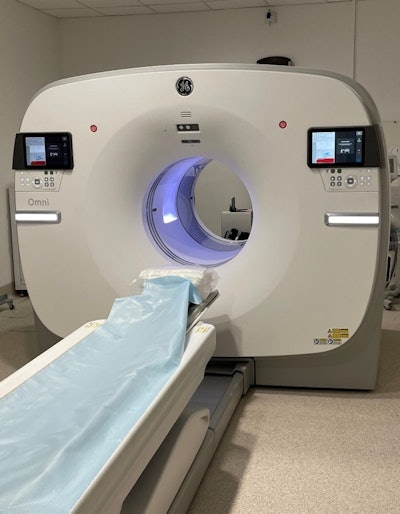 Installation of the Omni Legend system is complete at one of Affidea's three clinical sites in Warsaw, Poland.
Installation of the Omni Legend system is complete at one of Affidea's three clinical sites in Warsaw, Poland.Four months post launch, the Omni Legend system has been installed in more than a dozen locations around the world, including Europe (France, Poland, Switzerland), the U.S., the Middle East, Australia, and Japan. The first installation took place at the Rambam Health Care Campus in Haifa, Israel, and the second was at the Institut Universitaire du Cancer de Toulouse in France.
The system is designed with Precision DL deep-learning image processing software. This product already has a CE mark, but it is 510(k)-pending with the FDA and not yet available for sale in the U.S.
According to GE, "Omni Legend was built from the ground up by a team of engineers, clinical application leaders, scientists, and regulatory and commercial managers in close collaboration with the company's global partners and customers."
The development process took several years and included a clinical evaluation period in Israel and France. The scanner is manufactured in Israel.
The company claims the device's 32 cm axial field-of-view increases small lesion detectability by 16% on average and up to 20%, as compared with the Discovery MI 25 cm with matched scan time/injected dose, as demonstrated in phantom testing using a model observer with 4 mm lesions.
At the Rambam Health Care Campus, the scanner has helped to increase throughput by over a third due to shorter scan times -- achieving up to 35 patient scans during a 9.5-hour shift -- and reduce dose by 40% versus the old system, noted John Kennedy, PhD, chief physicist in the Nuclear Medicine Department.
Omni Legend will not be on display at ECR 2023, but it will be exhibited at the 36th Annual Congress of the EANM, to be held at the Austria Center Vienna on 9-13 September 2023.
Runner-up: Compact System 5000 Series ultrasound, Philips
Best New Radiology Software
EuroMinnies 2023 winner: Deep Resolve Boost for MRI reconstructions, Siemens Healthineers
Deep Resolve Boost, a k-space-based reconstruction protocol that focuses on artifact reduction, is a recent addition to the Deep Resolve AI-based reconstruction protocol for MRI introduced at RSNA 2020.
The software was developed over several years by R&D teams in Princeton, U.S.; Erlangen, Germany; and Bengaluru, India. Many colleagues from around the world "played a huge role developing the initial ideas, bringing them to a mature state, and collecting training data for the algorithms. Also, our clinical partners provided important feedback in the clinical setting to learn about the capabilities of this technology," Siemens Healthineers stated.
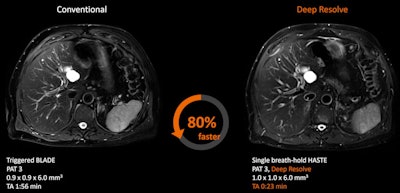 Deep Resolve Boost is now available on several hundred MRI systems, and it will be promoted at ECR 2023, according to Siemens Healthineers.
Deep Resolve Boost is now available on several hundred MRI systems, and it will be promoted at ECR 2023, according to Siemens Healthineers.Deep Resolve was first launched for wide-bore 1.5-tesla and 3-tesla systems and the Magnetom Free Platform. The technology was then applied to the vendor's other systems in our scanner portfolio, including 7-tesla machines.
According to Siemens Healthineers, "The name 'Deep Resolve' highlights the fact that the algorithms are deep-learning-based and combines this with a bit of emotion. Having 'resolve' or doing a task with 'resolve' means you are determined and purpose-driven to deliver an outstanding result. We found this name fitting."
The software has undergone rigorous internal testing as well as investigations at clinical sites. It has now been installed on several hundred MRI systems, and around 1.5 million scans have been performed using the technology, the company points out. The product will be promoted at ECR 2023 -- "with our Free. Platform being at the booth as an actual exhibit and us highlighting the recently launched Magnetom Cima.X and Terra.X, which can also benefit from Deep Resolve."
Looking further ahead, the plan is to add capabilities for diffusion-weighted imaging (DWI) and fast T2-weighted imaging in the abdomen (HASTE).
"DWI can provide critical information about the cellularity of tissue but is also typically a long examination," the vendor noted. "Neurological and oncological imaging will certainly benefit. Fast T2-weighted imaging is particularly useful in abdominal imaging for oncology questions. Multiple (usually three) breath-holds are required. With Deep Resolve, only one breath-hold is needed, making this exam easier for patients."
Depending on the body region and measurement, the software can save up to 88% of scan time but also reduce energy consumption by 60%, it claimed. "Every bit of energy that you can save in MRI helps reduce the environmental impact.
The software has recently become available on these Magnetom models: Sempra, Amira, Free.Max, Free.Star, Aera, Skyra, Prisma, and Prisma fit. Since 2022, it has been available on the Magnetom Lumina, Vida, Vida Fit, Altea, Sola, and Fit. The minimum software version required is the Syngo MR XA50A and Syngo MR XA51A."
This year, Deep Resolve will be rolled out to the following Magnetom models: Terra.X, Viato.mobile, Cima.X, Cima.X Fit, Avanto fit, Avanto Fit - A BioMatrix system, Skyra Fit, and Skyra Fit - A BioMatrix system. This means the software will be available on all Magnetom scanners by the end of 2023.
Runner-up: Auto Scan Assist MRI software, Canon Medical Systems
Best New Radiology Vendor
EuroMinnies 2023 winner: Gleamer, Paris
Gleamer is a French medtech company developing AI for radiology founded in 2017.
"In 2017, the radiology community needed more evidence, and only early adopters were interested in AI. So even though we knew we were building expert-level AI products, we had to prove it," noted Christian Allouche, chief executive officer and co-founder. "Over the years, we have worked actively to evidence our AI products' efficiency through clinical studies published in major peer-reviewed journals."
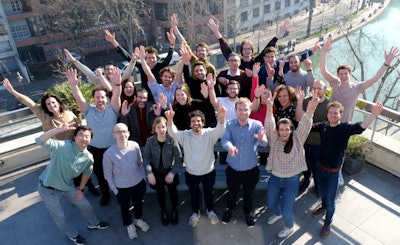 Gleamer now has over 50 staff and customers in 22 countries, mainly Europe, the U.S., and Australia.
Gleamer now has over 50 staff and customers in 22 countries, mainly Europe, the U.S., and Australia.The big breakthrough for the vendor came at RSNA 2022, when a BoneView clinical validation paper won the Alexander Margulis Prize for Scientific Excellence.
"This was the first musculoskeletal (MSK) awarded paper since the committee's creation," Allouche said. "Many radiologists consider AI an essential safety net, a daily companion providing help and support. AI has become the new standard of care in radiology, with a market ready to purchase more solutions."
Gleamer has recently added two plain-film products:
- Bone Measurement provides automated MSK measurements (legs, feet, hips/pelvis, and spine). The aim is to save radiologists time and automatically generate a standardized report for orthopedic surgeons. At ECR 2023, the company will communicate results of clinical studies to prove repeatability and accuracy.
- Bone Age automates bone age assessment based on the Greulich-Pyle atlas, a widely used method for assessment of skeletal age.
CE mark clearance of these two products is pending and should be obtained soon. Gleamer also expects to receive European Medical Devices Regulation (MDR) certification shortly for BoneView and ChestView. After CE clearance, the plan is to announce a new partnership with a renowned French orthopedic clinic for Bone Measurement.
The firm's medical board comprises three radiologists (Profs. Gabriel Krestin, Jean-Denis Laredo, and Nicolas Theumann). It plays a key role, from the idea to the delivery of a solution, giving help on market research, product specifications, and product validation, according to Allouche. "Having key experts on board is, for sure, one of our main assets in designing expert-level algorithms."
Flexible working practices are a way to build trust and give the best experience for all, he added. "We already have team members fully remote in Europe and the U.S. All members of the head office are free to work partially from home when needed as well."
At ECR 2023, Gleamer's booth will be located at the AI village (booth "AI-46"). Visitors can check out a range of products, including ChestView, which will feature at a session on 1 March (3-4 p.m. Central European Time) on evaluation of radiologists' performance with and without AI aid for the detection of thoracic abnormalities on chest x-ray.
Runner-up: CancerCenter.AI, Wrocław, Poland
